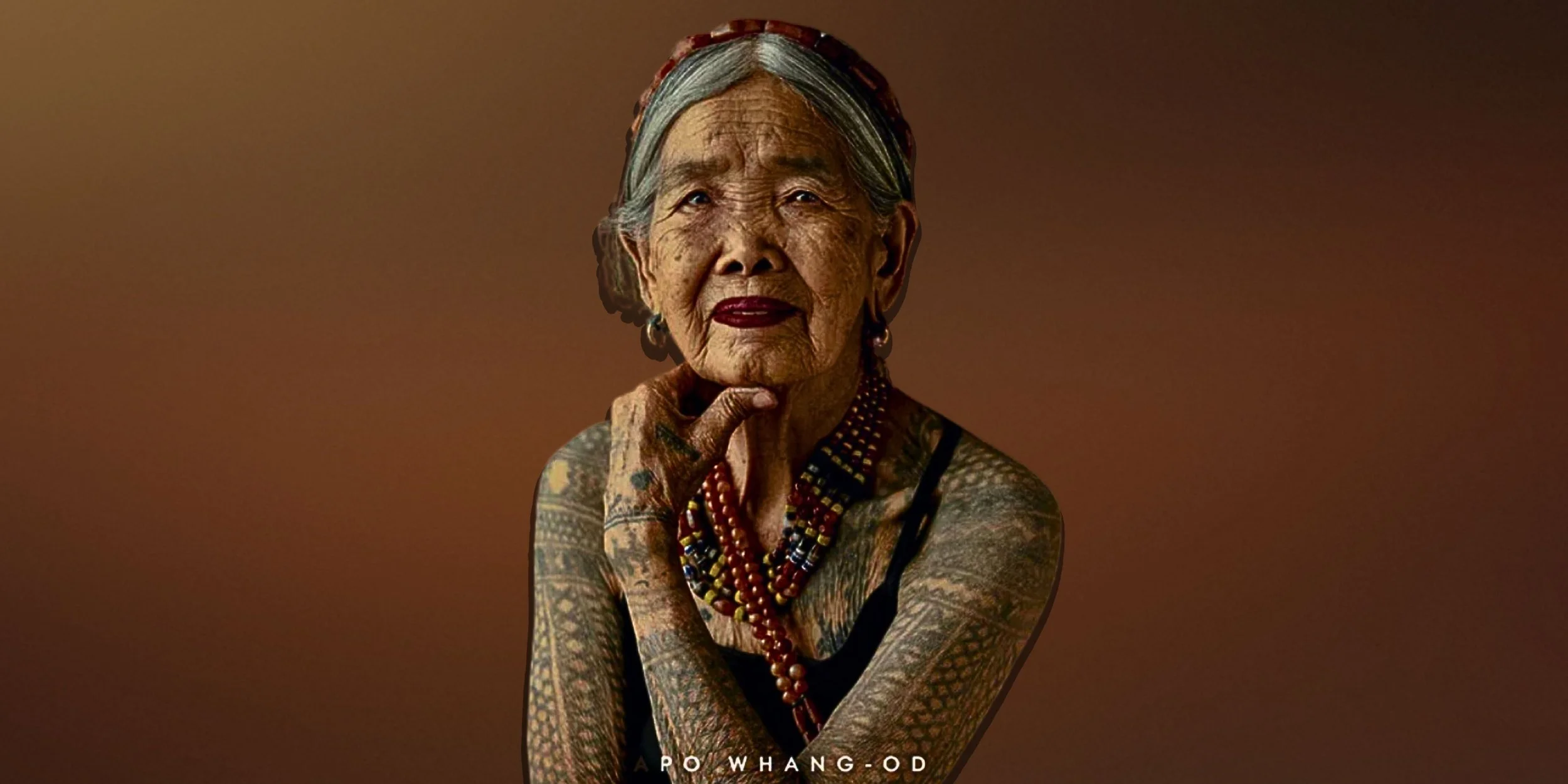ODD BEHAVIOR OF TATTOOS
The mysterious staying power of tattoos and why they are so difficult to remove.
In Kalinga village in the Philippines, 106 years young Apo Whang-Od holds an inked gisi (a bamboo stick with a thorn attached to one end), uses a larger stick to whack it with her right hand, driving over a hundred times per minute into the flesh. This is a centuries old practice of the indigenous tattooing. Tattooing skin since she was a teenager, Apo Whang-Od graces the April 2023 Vogue cover of Vogue Philippines and she is one of the last people on earth who practice ‘batok’.
In the cover photo, Apo Whang-Od is seen gracefully sitting, clad in the symbols of her tribe, the Kalinga. Apo uses delicate and precise tools to ink the stories of the Kalinga onto skin, allowing the wearer to carry history with them through life.
This practice is very spiritual for the members of Apo’s tribe as it symbolizes identity and kin as well as a mode of communicating stories and knowledge passed from their ancestors. It is believed that the designs on their skin protect them from evil spirits and travel with them to the afterlife, whereas tangible possessions do not.
This artistic form of self and cultural expression, tattooing or the carving of wounds into permanent, inked-in shapes that we find aesthetically pleasing, has been around for thousands of years. Tattoos have been discovered on humans as far back as 3,000 B.C. on mummified skin and in 4,900 B.C. tattoos were represented as an ancient art form. One of the strangest and least-studied enigmas, though, is how tattoos survive at all. Why is it that some tattoos quickly fade while others remain intact or their reaction to light (like the sun).
So much of tattooing still remains mysterious. Let’s dig deeper for a better understanding of what is really happening below the surface of the skin when receiving a tattoo.
THE PROCESS
When you get a tattoo, the ink is inserted via needle into the dermis (the second layer of skin). Your body sees this ink as a foreign invader and activates the immune system to seek out and destroy the unfamiliar material.
As part of this process, special white blood cells called macrophages envelop the ink and try to break it down with enzymes to a size small enough to be disposed of through the body’s lymphatic system.
(When the tattoo needle introduces bacteria at the same time as introducing ink, a similar macrophage response takes place. If the bacteria multiply faster than the white blood cells can destroy them, you will get an infection).
However, large tattoo ink droplets are not broken down by these enzymes. Once taken in by a macrophage, the ink molecules are stuck there. It is this trapped ink that you see when admiring your or your friend’s latest tattoo.
REMOVING TATTOOS
If you tattooed your ex-lovers name, what can be done to remove it? Removing tattoos can be quite challenging/difficult because of the macrophage death and renewal life cycle/process. Lasers are used to break up the ink droplets into small enough sizes that the body can successfully remove. This process often takes multiple costly visits with the service technician.
If we can somehow stop the arrival of new macrophages to the area where a tattoo is being removed, it could speed along the laser process and allow the lymphatic system to remove fragmented particles more easily. There is still more research needed to be done before this can be a possibility.
HEALTH & SAFETY
If someone is immunocompromised, is it safe to get a tattoo? The jury is still out. There have been instances of immunosuppressed individuals experiencing severe muscle pain and swelling after receiving a tattoo. However, it is not clear whether this is because of the tattoo process itself or by another external factor (such as an injury) that coincided with the time of receiving the tattoo. It seems plausible that a body already struggling to fight infections could be overwhelmed when a tattoo is added to the equation. More research is needed.
OTHER FINDINGS
Other research has shown a possible link between tattoos and a strengthened immune system. When you get a tattoo, the body’s immune system immediately bolsters itself to fight off infection, but research has found that this happens not just at the “injured” tattoo site but throughout the entire body, and the response has shown to be cumulative.
As part of the body’s endocrine system, levels of cortisol (the hormone known to produce the “fight or flight” response in times of stress) seem to decrease during subsequent tattoo creations.
When cortisol levels are too high over a period, blood pressure and the processing of food can run amok, causing diabetes, and anxiety can become uncontrollable. These decreased moments of cortisol post-tattooing can, thus, be beneficial to overall health.
While tattoos seem only “skin deep,” research continues to show us that they affect numerous body systems, including the immune, lymphatic, and endocrine systems.

